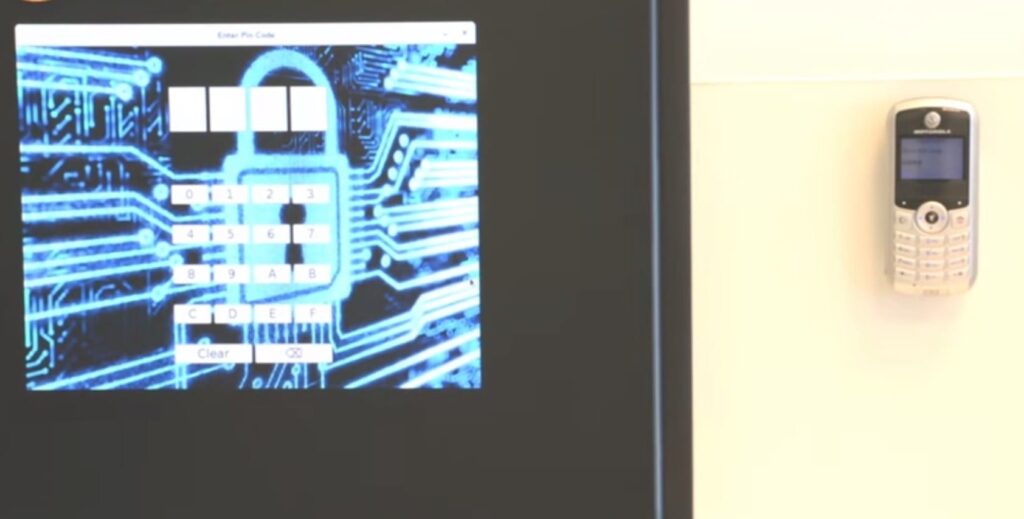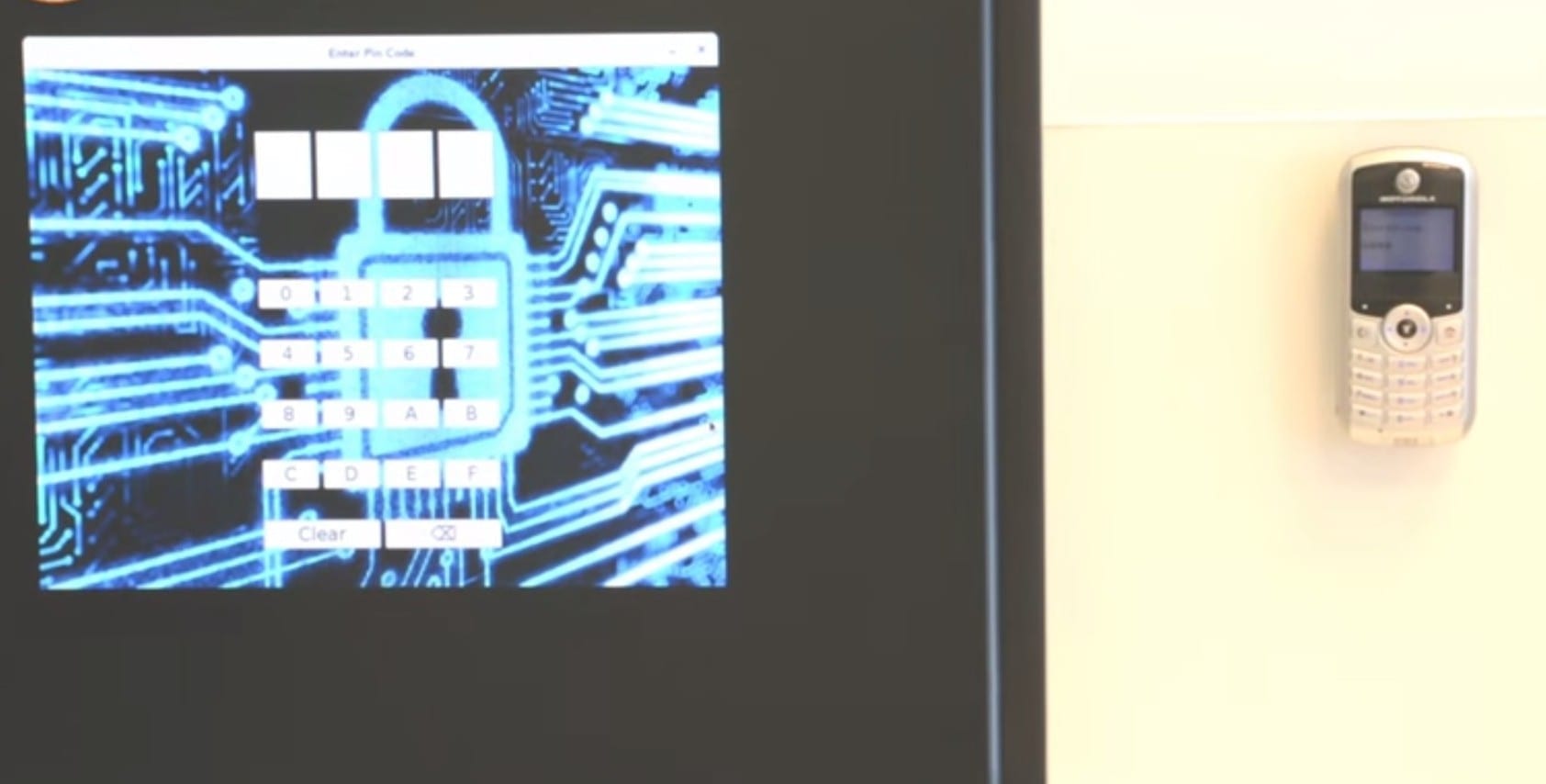
Researchers at the Ben-Gurion University of the Negev (BGU) Cyber Security Research Center have discovered that virtually any cellphone infected with a malicious code can use GSM phone frequencies to steal critical information from infected “air-gapped” computers.
Air-gapped computers are isolated — separated both logically and physically from public networks — ostensibly so that they cannot be hacked over the Internet or within company networks.
Led by BGU Ph.D. student Mordechai Guri, the research team discovered how to turn an ordinary air-gapped computer into a cellular transmitting antenna using software that modifies the CPU firmware. GSMem malicious software uses the electromagnetic waves from phones to receive and exfiltrate small bits of data, such as security keys and passwords.
Click here to watch a video of the demonstration.
“GSMem takes the air out of the gap and will force the world to rethink air-gap security,” says
Dudu Mimran, chief technology officer of BGU’s Cyber Security Research Center. “Our GSMem malicious software on Windows and Linux has a tiny computational footprint, which makes it very hard to detect. Furthermore, with a dedicated receiver, we were successful exfiltrating data as far as 90 ft. (30 meters) in distance from the computer.”
According to Guri, “Many companies already restrict the use of cell phones or limit the capabilities (no camera, video or Wi-Fi on cell phones) around air-gapped computers. However, phones are often otherwise allowed in the vicinity of air-gapped computers thought to be secure. Since modern computers emit some electromagnetic radiation (EMR) at various wavelengths and strengths, and cellular phones easily receive them, this creates an opportunity for attackers.”
The researchers recommend that countermeasures to mitigate the issue use the “Zone” approach: defined areas or zones around these computers where mobile phones and simple devices are prohibited. Insulation of partition walls may help to mitigate signal reception distance growth if a dedicated hardware receiver is used. Additionally, anomaly detection and behavioral dynamic analysis may help.
Read more: Cellphones Can Steal Data from Computers
The Latest on: Air gapped computers
[google_news title=”” keyword=”Air gapped computers” num_posts=”10″ blurb_length=”0″ show_thumb=”left”]
via Google News
The Latest on: Air gapped computers
- Rivermen win game two of the President’s Cup Finalson April 27, 2024 at 7:57 pm
The Peoria Rivermen won against the Huntsville Havoc in game two of the President’s Cup Finals on Saturday. The Rivermen started with a three to one lead at ...
- Apple’s iPad Pro Revival Will Disrupt MacBook Pro Successon April 27, 2024 at 10:33 am
As Apple prepares to launch a new iPad model after an eighteen-month gap ... computer. With a stylus, a touchscreen, and a keyboard available, the iPad Pro could satisfy the core needs of consumers ...
- Federal regulator says Tesla Autopilot linked to hundreds of collisions, has ‘critical safety gap'on April 26, 2024 at 10:21 am
Federal authorities say a “critical safety gap” in Tesla’s Autopilot system contributed to at least 467 collisions, 13 resulting in fatalities.
- Dell XPS 13 and XPS 14 review (2024): Gorgeous laptops with usability quirkson April 26, 2024 at 6:00 am
Say farewell to the classic XPS 13, and say hello to the spiffy new XPS 13. Dell surprised us at CES by bringing the modern (and somewhat controversial) design of 2022's XPS 13 Plus to its entire ...
- Biden celebrates computer chip factories, pitching voters on American ‘comeback’on April 25, 2024 at 4:58 pm
President Joe Biden has arrived in New York state to celebrate a tech company’s plans to build a campus of computer chip factories made possible in part with government support.
- Apple's 12.9-Inch iPad Air Tipped to Feature LCD Panel Just Like 5th Gen iPad Air Modelon April 25, 2024 at 6:37 am
Apple was previously tipped to equip the purported 12.9-inch iPad Air with a Mini-LED screen using leftover iPad Pro panels.
- Distant spacecraft sends data to Earth for first time in 5 monthson April 23, 2024 at 8:06 am
The most distant spacecraft from Earth has resumed sending data after a five-month gap, NASA said Monday.
- Column: AI moviemaking software ‘so easy an alien could do it.’ But where do visual effects go from here?on April 22, 2024 at 3:00 am
Wonder Dynamics is selling a special-effects tool to budding filmmakers at a low price. Are movies better for it?
- Best Buy's MacBook Air sale drives prices down to $599on April 20, 2024 at 1:51 pm
April's MacBook Air sales are in full swing, with Best Buy having limited inventory of a Geek Squad Certified Refurbished M1 model for $599 and M2 models in new, factory sealed condition up to $400 ...
- 2024 NFL mock draft: Full first-round computer simulation with WR shake-up at the topon April 20, 2024 at 4:18 am
In this full first-round computer simulated mock draft from PFF, we see a shake-up at the top of the draft at the WR position, impacting how the rest of the draft unfolds.
via Bing News











